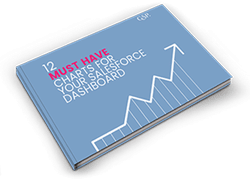How To Know When To Transfer Leads From Marketing To Sales
Passing leads from marketing to sales at the right time is critical for maximizing deal conversion rates.
Too early, and salespeople will likely ignore the leads.
Too late, and you are wasting valuable sales opportunities because the prospect has gone elsewhere.
Of course, that lead transfer inflection point varies from company to company. So, how do you know when it’s the right time to pass leads from marketing to sales in your business?
Fortunately, you can use the rules and best practices explained here
to define when to handover leads from marketing to sales in your company.
The Lead Transfer Problem
It’s early December, and the snow is falling outside the building in Illinois.
Inside the room, it’s even chillier.
“The leads we get marketing are rubbish,” exclaims the VP of Sales to the rest of the group.
“How the hell would you know?” spits back the VP of Marketing. “Your team never phones any of the leads we DO give you!”.
The feeling of mutual dissatisfaction may not be as glaring in your company. However, a version of this anecdote often plays out in many companies.
So why does it happen?
Leads That Are Not Sales Ready
It’s easier to identify leads that are not ready to pass from marketing to sales than those that are.
For example, have you ever downloaded an eBook and thought, “That sounds interesting. I’ll read it when I’ve got five minutes.”?
Of course, those five minutes rarely arrive. Some people have an entire library of eBooks they never got around to reading.
Nevertheless, many people are not surprised to receive a call from sales after downloading an eBook. However, how much do you look forward to receiving those calls?
In short:
Most people whose only engagement with your company is downloading an ebook are not yet ready to speak to a salesperson.
In many companies, it’s the same with webinars.
“It will be like shooting fish in a barrel,” the VP of Marketing at a large London-based online training company told me.
Paul had finished a webinar a few minutes earlier—with an impressive 476 new attendees. He passed the spreadsheet over to sales and expected a bumper sales month.
Unfortunately, Paul was disappointed. Do you want to guess how many sales came from those webinar attendees?
That’s right, precisely zero. None whatsoever.
Partly that was because salespeople didn’t phone many of the leads. And those they did phone, the typical response was, “Thanks, I’m just researching at the moment.”
Sales and Marketing Priorities
Here’s the juxtaposition:
Marketing is under pressure to increase leads. Sales are under pressure to increase revenue.
However, the sales team often focuses on reasonably short timeframes. That usually means salespeople don’t have the time, inclination, tools, or skills to convert early-stage, unqualified leads into warm prospects.
That explains why early-stage leads passed from marketing to sales are often ignored. Or, at best, low down the priority list. For salespeople, focussing on opportunities already in the pipeline is a better way to hit your number.
Of course, it’s critical for marketing to build fresh leads. Without them, there’s no longer-term funnel.
And what’s more, there ARE new leads that come into marketing ready to be called immediately by sales.
So here’s the problem:
How do you know which leads to transfer to sales now and which to continue to nurture? And how do you identify those leads that are straightaway hot to trot?
The answer is to make these calls based on five guidelines.
Here they are.
Superb Pipeline Visibility and Sales
Performance Metrics from this free Dashboard.
Five Lead Transfer Guidelines
These are the five guidelines that help you pass leads from marketing to sales at the right time.
- Vary the lead handover process based on lead source.
- Track changes in the lead score to identify urgent prospects.
- Change your method if you have an inside sales team.
- Set the bar higher if you are in a mature marketplace.
- Flex the lead transfer threshold over time.
Let’s dive in.
1 – Vary The Process By Lead Source
In most CRM systems, Salesforce included the Lead Source picklist tells you where the lead originated.
When you import a list of leads, for example, you manually set an appropriate Lead Source.
However, I recommend you automatically set the Lead Source by using a hidden field on your website forms.
As a result, you can accelerate new leads from specific forms. For example, if the customer completes a Contact Us form, you likely want to push that lead immediately to an appropriate salesperson.
Alternatively, when the prospect downloads an eBook, whitepaper, registers for a webinar, or fills some other non-urgent form, you may decide to add the lead to a nurture program.
In summary: the first step in finding a better way to handover leads from marketing to sales to differentiate your process by Lead Source.
So far, so good.
Let’s talk about a more contentious topic.
2 – Tracking Lead Score Changes
Lots of companies use a lead score threshold to decide when to transfer leads from marketing to sales.
You need to be using a marketing automation system, like Pardot, Marketo, or Hubspot, to make this work.
Points accumulate as the prospect engages with email, web pages, and other marketing communications. Sometimes, points are also assigned based on firmographic information, such as location, industry, or sector.
When the lead passes the threshold, say 200 points, it transfers from marketing to sales.
The lead score is valuable when you need to prioritize. For example, let’s say there’s only time to call one more person today. You have a lead with 500 points and another with 200 points. Which do you phone?
Of course, all other things being equal, you call the lead with 500 points.
However, here’s the rub when it comes to lead scores:
Often, it’s not the lead score that matters most. Instead, it’s the change in the lead score.
For example, let’s say those 500 points accumulated steadily over the last twelve months.
On the other hand, suppose the other lead gathered all 200 points over the last five days.
Which lead do you phone first now?
Most people will go for the lead with 200 points. There’s a greater urgency with this prospect. In other words, it’s not only the total lead score that is important; the pace of change in the lead score is critical.
Bottom line: Use the lead score change as a vital input in deciding when to pass lead from marketing to sales.
For more information on the best way to track Lead Score change and how to view the results inside Salesforce, read this blog post: How To Track Changes In The Lead Score And Highlight Priority Prospects
3 – Existence of an Inside Sales Team
If you have a team – or even a single person – that can engage with low point-scoring leads, then you can adapt your lead process.
That’s because rather than handing leads directly from marketing to sales, you first qualify them using the inside sales team.
Conversely, if you rely only on marketing activities to nurture leads, you rely more heavily on inbound leads.
Here’s why.
- When an inside sales team member speaks to a lead, one of three outcomes occurs.There’s no further action. The prospect is not sufficiently interested, or not in a relevant segment, to justify any more effort.
- It’s a definite maybe. There’s moderate interest, and you likely schedule a follow-up call.
- It’s a qualified lead. The person is willing to engage with a salesperson.
Either way, there’s a lot of time and effort needed to arrive at these outcomes. It’s hard work trying to contact people, there’s a fair degree of rejection, and you often have to work through a relatively large number of leads to get a positive outcome.
Pro tip: If you have an inside sales team, consider using the High Velocity Sales (HVS) app within Salesforce to optimize productivity and results.
In short: adapt your lead process and the point at which you pass leads from marketing to sales, based on whether you have an inside sales team qualification capability.
4 – Marketplace and Product Maturity
Many products and services we take for granted today were novel when first introduced.
For example, 18 years ago, when I first started implementing Salesforce, few people ‘got’ cloud computing. I remember watching Marc Benioff bang about the benefits of multi-tenant architecture in presentation after each presentation.
But here’s the thing.
Back then, Salesforce salespeople would take any lead. There was little or no pre-qualification because the team knew the customer didn’t understand the internet in a business context. Instead, they had to educate prospects about security, flexibility, and access from any device.
Things are different now.
The marketplace has matured. You’d be pretty surprised to hear about a CRM system that needs a bank of in-house servers.
Consequently, the way Salesforce deals with new leads is radically different today. The company employs an army of inside sales team members. There’s an extensive set of qualification questions, and you have to come clean on your business priorities, your buying process, and the stakeholders involved.
In other words, the more unique your proposition, the less informed your buyers, and the more immature the marketplace and your company, the lower the threshold is likely to be for passing leads from marketing to sales.
Bottom line: consider the dynamics of your market, business, and customers when you define the inflection point for transferring leads to salespeople.
5 – Flex The Lead Transfer Threshold Over Time
You’ve established a lead score threshold, and you are tracking the change in lead score over time. However, it doesn’t mean your lead management process and the point you transfer leads from marketing to sales has to be locked in stone.
There are two reasons why you need to be flexible with your approach over time.
First, tests and experiments will improve the process.
I recommend you use track lead outcomes in Salesforce reports and dashboards.
However, you can also learn from qualitative feedback from salespeople. Using Chatter on the lead is an excellent way to gather this softer feedback on salespeople’s lead outcomes.
Apply both of these information sources to test what works well and what does not. Flex and adapt your process and measure the results.
Second, both the marketplace and your company change over time. Some businesses are swamped with new work during the pandemic. Others are ticking along, and some are merely trying to survive.
The lead management process and marketing-to-sales transfer approach working well one year ago may no longer be appropriate. You will need to change it.
In the future, marketplace and business changes will be (hopefully) less dramatic. Nevertheless, I recommend you regularly review and adjust your lead handover processes.
In short: regularly review and assess how your lead transfer process can improve over time. Experiment with different approaches and test the outcomes using feedback from sales.
What To Read Next
These additional blog posts will help you build a robust lead management process in Salesforce.

Don’t have time to read the entire Blog Post right now?
No problem.
You can download the entire “Your Sales Forecast Is Probably Wrong” eBook for free by completing the form below!










